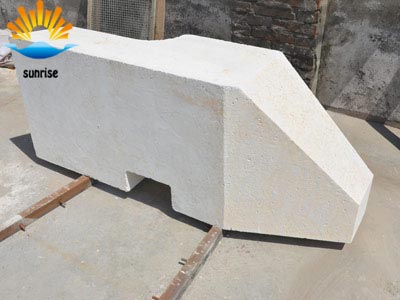Product Search
Quickly find the product you need
Products List
Refractory Knowledge
- Production Process Methods of Refractory
- Classification of mullite insulation bric
- Thermal Shock Resistant Fireproof Heat In
- Pollution and treatment in the production
- the development of the refractory brick i
- Manufacturing process of fire clay insula
- The Use of Mullite Insulation Bricks
- Pros and cons of lightweight mullite bric
- Refractory material production process
- Aggregates Used For the Production of Ins
Products List
- Phone:0086-370-63838939
- Email:sales@sunriserefr.com
- Office Address: No.36 Fengchan Road Of Zhengzhou, Henan, China (Mainland)
What are the common characteristics of lightweight mullite bricks?
Date:2019-10-18 11:10 | From:Zhengzhou Sunrise Refractory | Author:admin
Mullite brick refers to a high alumina refractory material with mullite as the main crystal phase. Generally, the alumina content is between 65% and 75%. There are two kinds of sintered mullite bricks and electric fused mullite bricks. The sintered mullite brick is made of high alumina bauxite as a main raw material, and a small amount of clay or raw bauxite is added as a binder, which is formed by molding and firing. The electric melting mullite brick is made of high alumina, industrial alumina and refractory clay, and is added with charcoal or coke fine particles as a reducing agent, and is formed by reduction electrofusion after molding. The crystal of fused mullite is larger than sintered mullite, and the thermal shock resistance is better than that of sintered products. Their high temperature performance depends mainly on the alumina content and the uniformity of the mullite phase and glass distribution.

Characteristics of Sunrise Murray Stone Brick
High refractoriness, up to 1790 °C. The load softening start temperature is 1600 to 1700 °C. Normal temperature compressive strength is 70 to 260 MPa. Good thermal shock resistance. There are two kinds of sintered mullite bricks and electric fused mullite bricks. The sintered mullite brick is made of high alumina bauxite clinker as a main raw material, and a small amount of clay or raw bauxite is added as a binder, which is formed by molding and firing. The electric melting mullite brick is made of high alumina, industrial alumina and refractory clay, and is added with charcoal or coke fine particles as a reducing agent, and is formed by reduction electrofusion after molding. The crystal of fused mullite is larger than sintered mullite, and the thermal shock resistance is better than that of sintered products. Their high temperature performance depends mainly on the alumina content and the uniformity of the mullite phase and glass distribution.
High refractoriness, up to 1790 °C. The load softening start temperature is 1600 to 1700 °C. Normal temperature compressive strength is 70 to 260 MPa. Good thermal shock resistance. There are two kinds of sintered mullite bricks and electric fused mullite bricks. The sintered mullite brick is made of high alumina bauxite clinker as a main raw material, and a small amount of clay or raw bauxite is added as a binder, which is formed by molding and firing. The electric melting mullite brick is made of high alumina, industrial alumina and refractory clay, and is added with charcoal or coke fine particles as a reducing agent, and is formed by reduction electrofusion after molding. The crystal of fused mullite is larger than sintered mullite, and the thermal shock resistance is better than that of sintered products. Their high temperature performance depends mainly on the alumina content and the uniformity of the mullite phase and glass distribution.
Mainly used in hot stove top, blast furnace body and furnace bottom, glass furnace regenerator, ceramic sintering kiln, oil cracking system dead angle lining.

